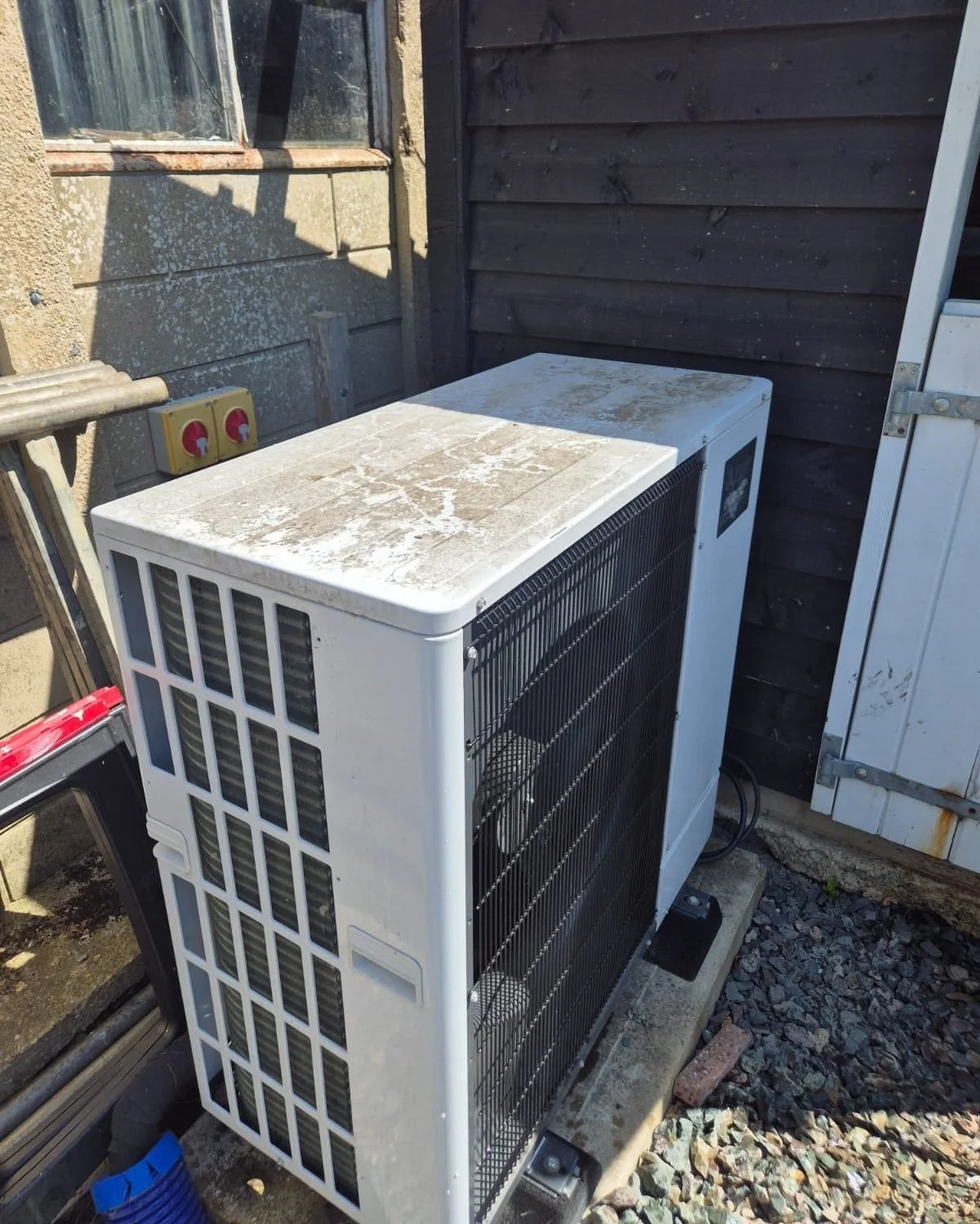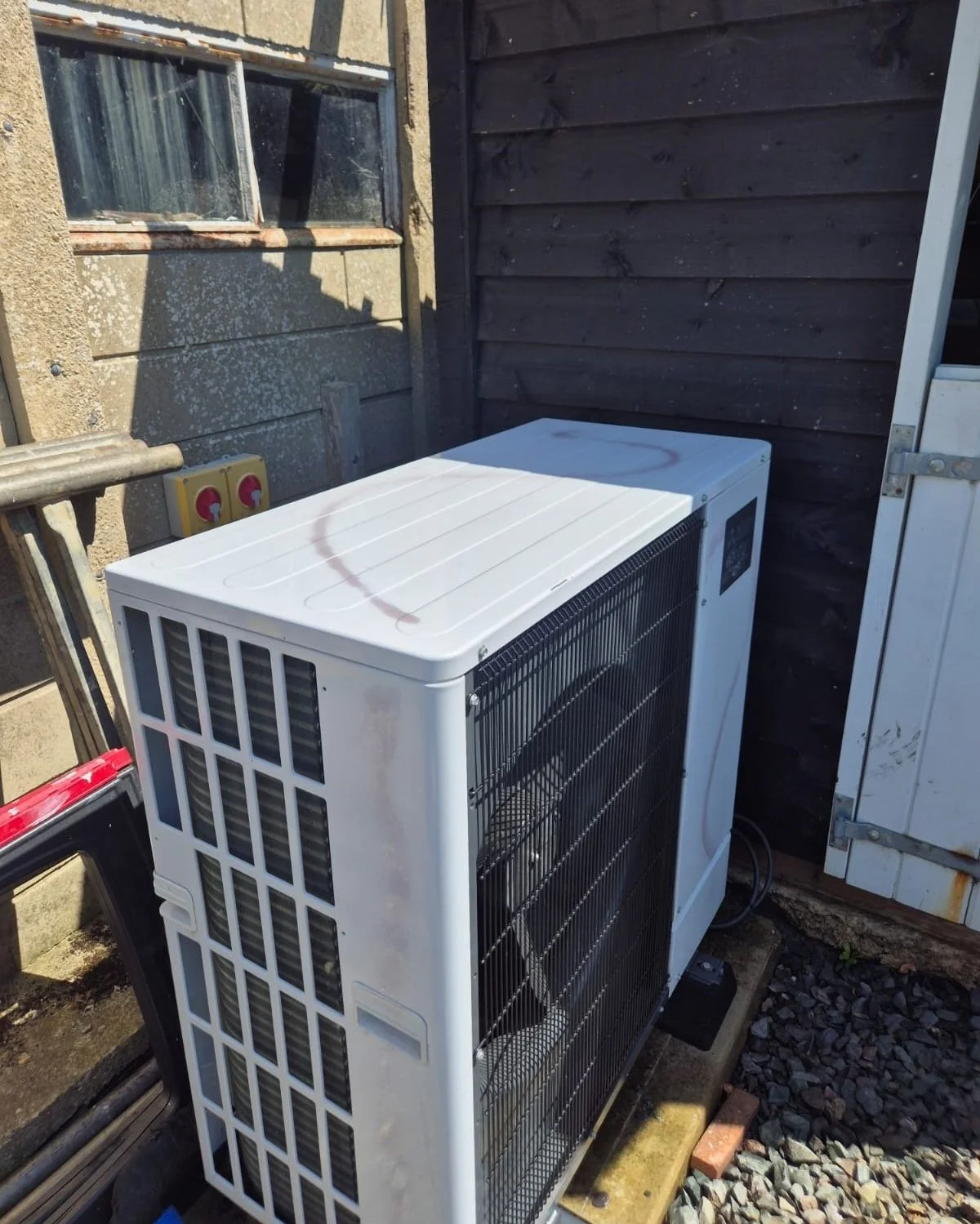Why regular maintenance matters for air source heat pumps – insights from the field
After spending over three years in the heat pump industry, I’ve come to appreciate just how essential regular servicing is—especially when it comes to air source heat pumps (ASHPs). These systems are highly efficient, environmentally friendly, and becoming increasingly popular across the UK.
But like any hardworking machine, they need regular care to keep them performing at their best.
How air source heat pumps work and what makes them different
Air source heat pumps work by extracting heat from the outside air—even in cold weather—and transferring it indoors to provide heating and hot water. Unlike ground source systems, which rely on underground loops and closed-loop heat exchangers, the ASHP heat exchanger coil is directly exposed to the elements.
This means the outdoor unit is slightly more vulnerable to issues like clogged coils, freezing, or blocked airflow caused by leaves and environmental debris. Inside the property, clogged filters, minor leaks or faulty pumps can also cause poor flow and reduce performance, all of which can be picked up and dealt with during a service.
The key benefits of servicing your air source heat pump
From hands-on experience, these are the biggest advantages of keeping up with ASHP servicing:
Energy efficiency
Dust, dirt and debris can build up on the outdoor coil, reducing airflow. Internal build-up on the condenser heat exchanger can also reduce flow, causing the system to work harder than necessary. Regular cleaning and checks keep everything running efficiently, reducing strain on components, lowering energy use and cutting your bills.
Reduced repair costs
A small issue, like a blocked heat exchanger or dirty filter, can turn into a much bigger problem if left unchecked. These systems are designed to run within certain parameters, so even minor faults can cause them to work outside spec. Servicing helps catch faults early—often while still within the manufacturer’s warranty period, usually between 5 to 7 years (depending on the product).
Longer lifespan
These are major systems and a long-term investment. Regular servicing helps protect that investment by keeping the unit in peak condition and extending its lifespan.
Improved reliability in cold weather
You need your system to work at its best in winter. Servicing ensures components like the defrost cycle, sensors, pumps and fans are working correctly, reducing the risk of failure in freezing temperatures.
Access to service plans
At Alto Energy, we offer affordable ASHP service plans. These spread out the cost and give you peace of mind that your system is being looked after year-round.
When heat pump maintenance is ignored – a real-life example
One of the worst ASHP failures I’ve seen was down to a complete lack of servicing—and as a result, the customer’s warranty was voided. The outdoor coil was completely clogged with leaves and grime, and someone had planted a bush around it to hide the unit, making airflow even worse.
The PCB had burnt out, the fan motor had failed from overwork, and a cascade of issues followed. The customer hadn’t serviced the unit once in five years since it was commissioned and only called when the system had completely stopped working.
The final bill came to just under £1,100 in call-out and repair costs, not to mention several days without heating during a cold snap. Because there was no service record, the manufacturer wouldn’t cover the repairs. Had the system been serviced yearly, the coil would have been cleaned, and we would’ve advised trimming back the bush before it became a problem.
What’s included in an ASHP service?
A full air source heat pump service usually includes the following:
- Cleaning the outdoor coil and fan
- Applying a corrosion inhibitor coating to the outdoor unit
- Checking refrigerant pressures and circuit performance
- A full visual inspection of the system
- Electrical checks including voltages and current draw
- Checking and monitoring flow rates, kWh usage and heat output (COP)
- Ensuring the defrost cycle is operating correctly (in winter)
- Checking expansion vessels and inhibitor/glycol levels
- Testing thermostat functions and control settings
- Backflushing the outdoor unit if needed
- Bleeding radiators and checking for airlocks
- Recording efficiency data and checking consumption levels
These checks not only help keep your system running smoothly but also give you a better understanding of how it works. It’s a good opportunity to ask questions and learn how to spot early signs of a fault.
Why skipping heat pump servicing usually costs more
Delaying maintenance might seem like a saving, but it often leads to more expensive outcomes later. Emergency call-outs, replacement parts, higher energy use, and system failures can all be avoided with regular servicing. Most service plans cost a few hundred pounds per year—a fraction of the cost of a major repair or replacement.
Keep your air source heat pump running at its best
In my experience, annual servicing is essential. It protects your system, keeps it efficient, and saves you money over time. ASHPs are robust pieces of kit, but they’re not invincible. A bit of attention each year helps avoid unexpected surprises, lets us monitor performance over time, and keeps your home warm and efficient all year round.
If you haven’t had your system serviced in a while, now’s the time. Don’t wait for a breakdown—give your heat pump the care it deserves.
Looking to purchase a heat pump?
If you’re considering replacing your fossil fuel system with a heat pump, you could be eligible for the Boiler Upgrade Scheme. Click the link below to get in touch with us, and we’ll help you find out if you qualify for the grant.




